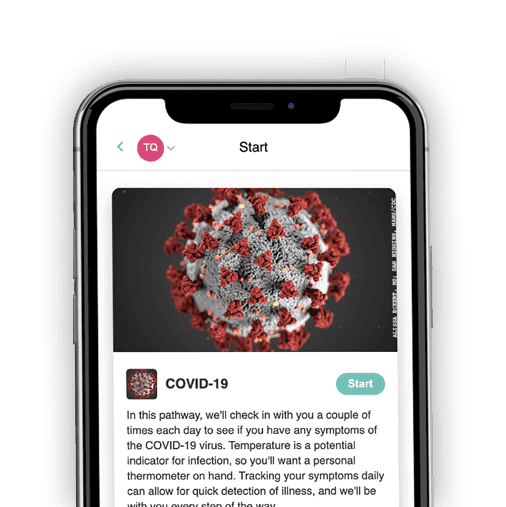As companies across the country begin to reopen or ramp up operations, the job of ensuring that employees are kept safe typically fall on the shoulder of human resources professionals. And it hasn’t been an easy task. Business leaders are increasingly turning to their HR, personnel or people programs department managers to…
- Stay on top of the most current news and science about COVID-19
- Understand local and state regulations, as well as federal guidelines, for businesses operating during this pandemic
- Develop new policies, protocols and procedures for minimizing the risk of exposure
- Establish new rules and systems for preventing the entry of COVID-19 into the workplace, as much as possible.
The challenge is made more difficult by the fact that COVID-19 is still a threat, perhaps even more so as we emerge from our home lockdowns. As of June 2, 2020, the Center for Disease Control and Prevention (CDC) has reported 1,802,470 confirmed COVID-19 cases with 105,157 deaths. Contrary to earlier misconceptions, COVID-19 is not like the flu. This virus is transmitted rapidly, and as much as 20% of cases require hospitalization, with fatality rates approaching two percent with many segments. While the risk of hospitalization and death does increase with people over 50 years old, COVID-19 strikes across all ages.
So where do you go to stay reliably informed about COVID-19? While many reliable public and private COVID-19 resources have emerged, three stand as probably the most important resources for HR professionals.
To help HR professionals rise to the challenge that many now face, we’ve developed this handy guide – specifically designed for companies looking to bring back their employees or continue operating as essential businesses.
Stay reliably informed
One of the negative consequences of the web and social media is that it has become easy for false, misleading or dangerously wrong information to spread. Human resources professionals who have become the go-to resource for their companies bear the added responsibility of ensuring that they’re using and sharing the most reliable information available. So where do you go to stay reliably informed about COVID-19? While many reliable public and private COVID-19 resources have emerged, three stand as probably the most important resources for HR professionals:
- CDC. The Centers for Disease Control & Prevention (CDC) is considered by health professionals to be the top source for the most current information and guidelines about the virus. They’ve even created a dedicated COVID-19 website.
- NIH. The National Institutes of Health (NIH) is a sister agency of the CDC, both of which are part of the Department of Health & Human Services. The NIH likewise maintains a dedicated webpage on COVID-19 news and guidance at https://www.nih.gov/coronavirus/.
- OSHA. The Occupational Safety and Health Administration (OSHA) is part of the Department of Labor and focuses on workplace safety and worker health. They also have a dedicated webpage focused on helping businesses trying to operate during this pandemic.
Easy COVID-19 tracking for your business.

Understanding government guidelines
Early on, as “essential businesses” continued to operate as much of the nation went into self-isolation mode, it became clear that we had a patchwork of regulations across the country. Sometimes, we had different regulations in different parts of a state – including what businesses were actually considered essential. The federal government has largely stayed away from issuing requirements or regulations. While the federal government has issued guidelines through the CDC, NIH, OSHA, etc., it has left it up to the states and local government to create their own localized COVID-19 rules and regulations. As businesses and organizations have started returning to work, these differences have become more pronounced. And for HR departments who are managing personnel and worksites across different states and localities, it can be a small headache. The good news is that most governments are relying on their health departments to publicize and formulate these rules. To stay on top of these governmental regulations and guidelines, HR departments or leaders should assemble a spreadsheet of government health departments – then regularly check those health departments to update their compliance spreadsheet:
- State departments of health. Start with the health department in every state in which your business operates.
- County health departments. Similarly, check with each county in which your business operates to locate their health department websites.
- Municipal health departments. Cities and larger municipalities will often have their own health agency, that typically works with the county and state health department. Don’t overlook these local agencies, as their rules may be more stringent than those from the state health department.
Developing new protocols and policies to reduce exposure
Practically every business and organization in the United States is adding new pages to their employee manuals to cover changes required by COVID-19.
Understanding COVID-19
Preventing the spread of the novel Coronavirus begins with an understanding of what we know about the virus. The COVID-19 virus is a droplet transmission virus from the respiratory tract. The COVID-19 virus is spread primarily from person-to-person but also remains active on surfaces where the droplets have landed. If a carrier coughs or sneezes the virus is released. Remember a person can be exposed to the virus before the carrier of the virus is even symptomatic. Symptoms appear 2-14 days after exposure, while the carrier is contagious 48 to 72 hours prior to symptoms developing. Just because a person is not “sick” does not mean they do not have COVID-19. The New England Journal of Medicine in several notable studies showed the virus can remain in the air for up to three hours. Once released the virus can live on surfaces for 4-78 hours:
- Plastic: 72 hours
- Stainless steel: 72 hours
- Copper: 4-8 hours
- Cardboard: 24 hours
The above timeframes are averages from controlled studies, but active virus particles have also been noted after 9 days on metal, glass and plastic surfaces as reported by the Journal of Hospital Infection.
Reducing the risk of exposure
The best way to prevent exposure is by reducing the risk of exposure. Limiting our face-to-face contact by working remotely has reduced the potential for exposure. But as workers start returning to work, the risk of exposure increases. As HR professionals develop new protocols and working arrangements, there are some key guidelines to consider regarding how employees will interact in the office:
- Social distancing. In general, workers should remain at least 6 feet (about 2 arms’ length) from each other, as much as possible.
- Avoid groups. One element of social distancing is to avoid gathering in groups. Of course, that becomes difficult with in-person meetings. If in-person meetings are necessary, encourage limiting the number of people attending the meeting and use the largest possible room for those meetings.
- PPE. If employees are in the same room, wearing face masks should be the norm while this pandemic persists. There should also be sanitizers available in the meeting rooms.
Successfully preventing the spread of COVID-19 in the workplace requires cooperation from all employees, especially when it comes to hygiene. The HR team may need to educate and remind employees what increased hygiene awareness requires:
- Hand hygiene. Thoroughly washing hands for at least 20 seconds is necessary to reduce exposure risk, now more than ever. If unable to wash hands, use an alcohol-based hand rub with greater than 60% ethanol or 70% isopropanol to clean hands.
- Facemasks. Employees should wear a facemask while in the office, especially when they are in shared or public spaces. While facemasks may not protect employees from getting infected, facemasks can help minimize the chances of infected individuals spreading the virus.
- Face touching. It is difficult, but everyone needs to become more aware of the need to minimize touching their face, especially if they’ve touched other surfaces or individuals.
- Physical contact. Until we’ve effectively dealt with COVID-19, employees will need to refrain from all physical contact, from handshakes and hugs to even fist and elbow bumps.
As noted earlier, the COVID-19 virus can remain alive on some surfaces for up to three days. This means that organizations will need to expand and increase their cleaning and sanitizing regimens. A daily cleaning is no longer acceptable, especially with busy offices, factory floors and worksites. As a rule, employees should routinely sanitize all surfaces and items that could potentially have been exposed with EPA approved disinfectants. Some common surfaces to keep in mind include…
- Tables and desks
- Chairs and furniture
- Doorknobs and handles
- Appliances and equipment (refrigerators, printers, etc.)
- Toilets and faucets
Normal cleaning with soap and water decreases the amount of the virus on surfaces, but using an EPA approved disinfectant will ensure that the surfaces are virus free. Note that solid surfaces have different protocols for disinfecting than porous surfaces. Follow the EPA guidance for these different types of surfaces. On a practical level, this means that businesses and organizations will need to invest in having sanitizers and disinfecting supplies in every room and most desks in the company. The CDC COVID-19 website has a guide for cleaning and disinfecting workplaces to help organizations develop a strategic plan to reduce the risk of exposure.
It may well be impossible to stop COVID-19 from entering your office, factory, plant or worksite. But there are still specific steps organizations can take to prevent entry. And top on the list is to encourage and support employees to stay at home if they have may have COVID-19.
Preventing the entry of COVID-19
The preceding section describes precautions that companies can take to prevent the spread of COVID-19 inside the workplace. But the flip side of that is taking steps to prevent COVID-19 from entering the workplace in the first place. It may well be impossible to stop COVID-19 from entering your office, factory, plant or worksite. But there are still specific steps organizations can take to prevent entry. And top on the list is to encourage and support employees to stay at home if they have may have COVID-19. Many businesses have instituted temperature checks at the entrances to their facilities. The problem with this approach is obvious though: organizations risk bottlenecks where employees are forced into groups that may actually facilitate the possible spread of infections.
Easy COVID-19 tracking for your business.

Pre-screening
A better alternative is to have employees pre-screen themselves – before they leave for work. Pre-screening would…
- Allow cleared employees to go straight to their desks or workstations
- Flag employees with minor symptoms who may need to be evaluated before they enter
- Direct employees with serious symptoms to not come to work until they are cleared by a medical professional or the company
Small businesses with only a handful of employees can probably use a simple online form to have their employees prescreen before coming to work. For larger organizations, several COVID-19 screening apps for businesses and organizations have emerged. The simplest COVID-19 apps for employers are just online forms and surveys. The more robust COVID-19 screening tools provide apps for employees and a monitoring dashboard for employers. Regardless of which option you choose, it’s important that the employee COVID-19 screening process include the most current screening criteria from the CDC or NIH. These currently include the following potential symptoms:
- Fever (100.4 degrees Fahrenheit) or chills
- Cough
- Shortness of breath or difficulty breathing
- Fatigue
- Muscle or body aches
- Headache
- Recent loss of taste or smell
- Sore throat
- Congestion or runny nose
- Nausea or vomiting
- Diarrhea
As noted in the beginning of this article, some state and local governments have instituted more stringent rules and guidelines for businesses seeking to reopen or ramp up during the pandemic. For example, the COVID-19 guidelines for Michigan businesses are among the strongest in the nation. Screening procedures for Michigan businesses may include inquiring whether the employee has been out of town and, in some cases, outside of the country. Regardless of what state or locality your business may reside in, be sure to check with state and local health departments regarding their employee COVID-19 screening recommendations and requirements. You’ll also want to keep an eye out for emergency situations of potential COVID-19 exposure, which include…
- Trouble breathing
- Persistent pain or pressure in chest
- Recent bouts of confusion
- Inability to wake up or stay awake
- Bluish lips or face
If an employee exhibits any of the above symptoms, consider it a medical emergency and call 911 alerting the operator of potential COVID-19 exposure.
Putting it all together
OSHA has developed a guide for “preparing the workplace” to reduce the impact of COVID-19. OSHA defines four risk categories for businesses and organizations operating during the pandemic. Depending on your business or organization, you need to take specific steps to safeguard your employees and worksites.
- Very High Risk: healthcare, post-mortem and laboratory employees working with known or suspected COVID-19 exposed clients (aerosol-generating procedures). Employers need to ensure that the air-handling system reduces the amount or recycled air. Isolation rooms will probably be needed. PPE should always be readily accessible and used as deemed appropriate. Increased medical monitoring of employees will be needed due to the increased risk for work-related exposure to COVID-19.
- High Risk: healthcare, medical transport and mortuary employees working with known or suspected COVID-19 exposed clients. Similar to the Very High Risk category, employers need to ensure that the air-handling system reduces the amount or recycled air. Isolation rooms may be needed. PPE should always be readily accessible and used as deemed appropriate. Employee monitoring will be needed due to the increased risk for work-related exposure to COVID-19.
- Medium Risk: all employees with close contact to people who may be, but are not known or suspected of being, infected with COVID-19. Installing physical barriers such as sneeze guards will help to reduce the potential risk. Limit customers to maintain social distancing. Masks and other PPE may be deemed appropriate.
- Lower Risk: all other workplaces that do not meet any of the other risk categories. No specific exposure reduction protocols are advised for this level, but that doesn’t mean precautions should not be taken. Maintain social distancing and mask usage as appropriate. Disinfect public areas, areas with heavy traffic, all surfaces frequently touched regularly through the workday (such as cash registers, payment terminals, countertops, etc.).
Regardless of which risk category applies for a business or organization, HR professionals – particularly their department directors – must take the lead in developing, implementing and enforcing a new culture in their organizations. It’s not enough to create new policies and protocols for the employee handbook. This pandemic requires that we develop smart policies and protocols, and then fully implement them.
The Calcium COVID-19 employee screening solution can help you eliminate the hassle of pre-screening your employees for COVID-19. Read more at covid19.calciumhealth.com.
Easy COVID-19 tracking for your business.


















